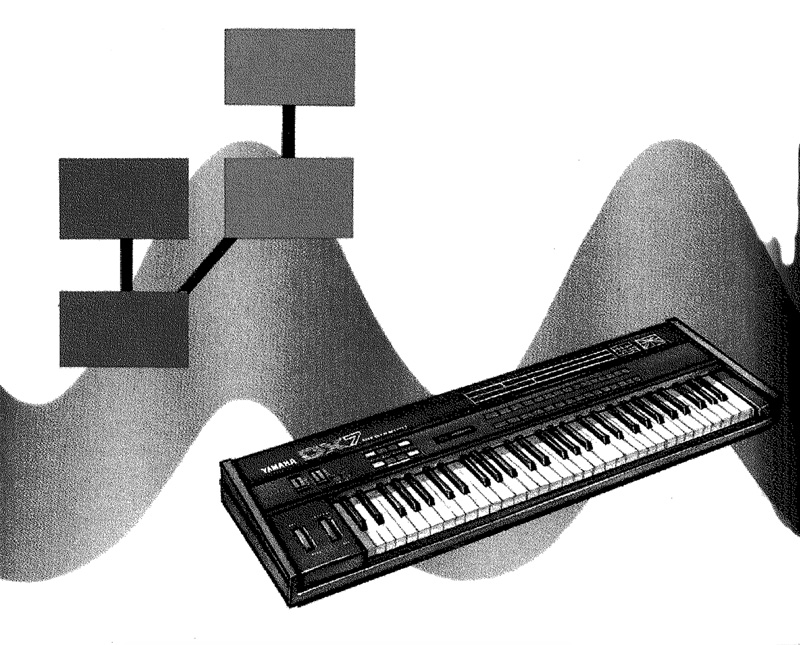In this video, we explore the many sides of Humble Audio's Quad Operator—a Eurorack module that presents a welcome reimagining of Yamaha's classic FM structure. By providing direct control for each individual operator and matrix-style algorithm construction, the Quad Operator makes experimenting with complex FM configurations easy...which is, of course, no small feat.
DX: FM in the 1980s
Those familiar with the story of synthesizer production in the 1980s will no doubt recognize the Yamaha DX-7. It provided musicians immediate access to an enormous array of sounds by utilizing a commercialized implementation of John Chowning's FM synthesis method. And of course, its price was well within reach for the common musician, which, in the age of the Fairlight and Synclavier, was of course quite welcome.
 A crazy DX-7 graphic from John Chowning's "FM Theory & Applications" (1986)
A crazy DX-7 graphic from John Chowning's "FM Theory & Applications" (1986)
However, the legacy of the DX series is not all positive. Most people who have used one of these instruments will immediately attest to the difficulty of editing presets or creating new sounds: despite being very powerful, the level of detail and complexity involved in FM synthesis made it such that designing new sounds often became unpredictable, even discouraging. And of course, using the single data entry slider to modify this vast array of parameters was...not so easy. This lack of immediacy led the DX series synths to be treated more or less as preset-based machines by most users.
Recently, several manufacturers have pushed toward rediscovering this type of FM synthesis and experimenting with ways to make it more immediate and approachable. Korg's Volca FM offers DX-style synthesis at an unprecedented price, while Elektron's Digitone provides a streamlined feature set and user interface that makes programming new sounds much more intuitive than on a vintage DX. But then, there's a different approach: Humble Audio's.
FM Made Easy
Humble Audio's Quad Operator opens up DX-style synthesis and provides direct access to the raw components: tuning and shape control for each operator, and a matrix-style routing system that dispenses of the DX concept of an "algorithm" (a preset internal modulation routing) in favor of direct access to each modulation node. This makes it quick and easy to dial in everything from traditional glassy FM tones to abrasive feedback glitches.
Quad Operator provides CV inputs for the tuning ratio, shape, and gain of all of its internal operators as well, giving it plenty of opportunity to fit into a modular system. Simply add in control voltage sources and the Quad Operator turns into a morphing, hyper-controllable update of Yamaha's classic synthesis method. The Algo expander module also provides access to stored routing configurations (not unlike the "Algorithms" of the original DX series), making it possible to easily access drastically different tones immediately. Algo also makes it possible to continuously interpolate between algorithms—a feat not possible at all on DX synths.
I am personally excited to see new manufacturers taking on the challenge of FM synthesis. The difficulty of using its early implementations led it to quickly earn an unfavorable reputation, but when afforded some patience it can produce sounds unlike anything else. Instruments like the Quad Operator provide unprecedented access to FM's inner workings, making it in many ways more immediate and inspirational than it has ever been before.







